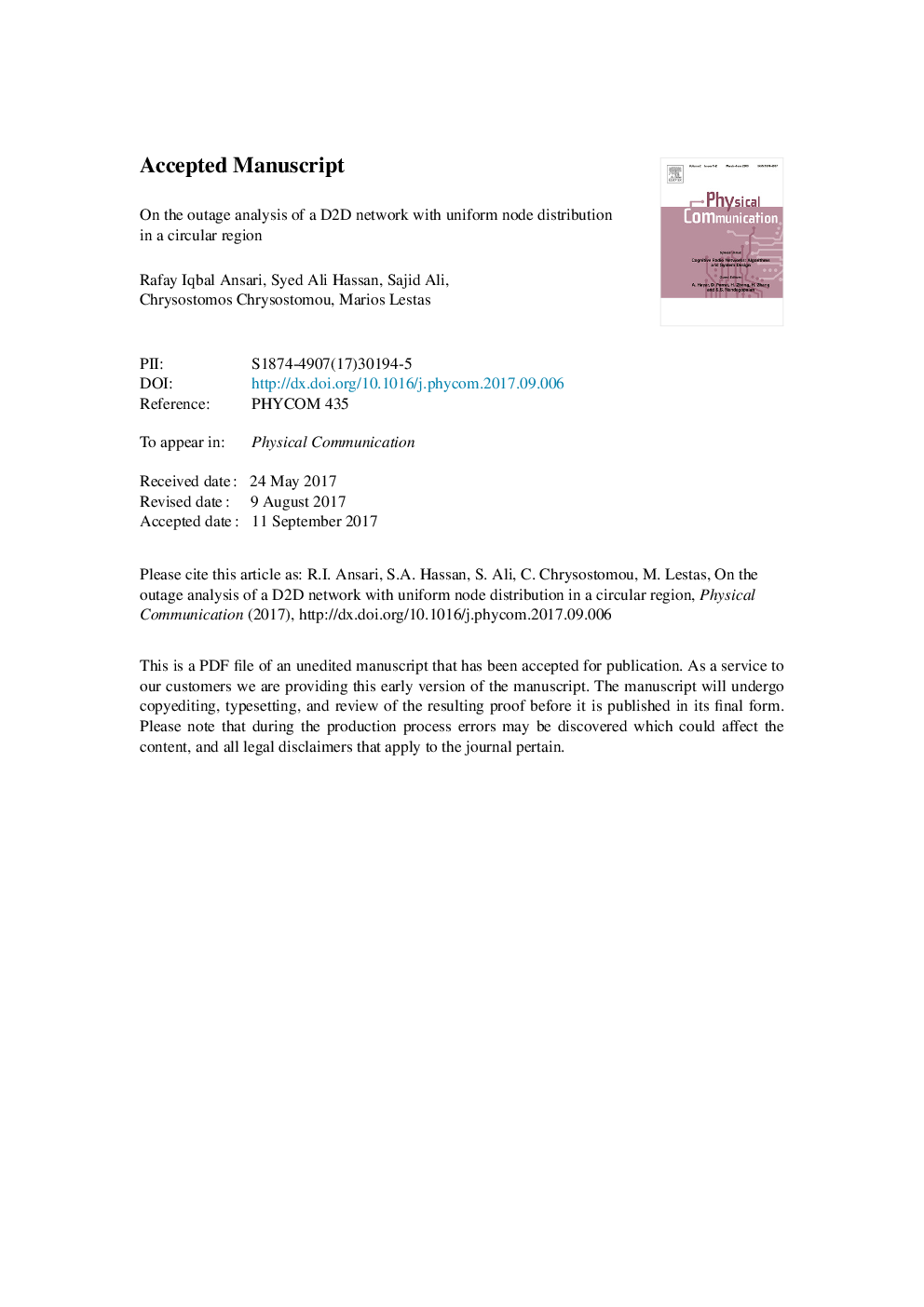| Article ID | Journal | Published Year | Pages | File Type |
|---|---|---|---|---|
| 6889368 | Physical Communication | 2017 | 31 Pages |
Abstract
This paper studies the coverage probability of a device-to-device (D2D) link between a pair of nodes uniformly distributed in a circular region of arbitrary radius, thereby modeling the D2D network operation for a public safety scenario. The expression for the cumulative distribution function (CDF) of the signal-to-interference ratio (SIR) at the destination is derived, where the transmissions are affected by multipath fading, path loss and interference. The analysis involves finding the ratio distribution of two random variables, representing the desired signal and the intra-region interference, respectively. The expression for CDF helps in ascertaining the outage probability at the destination. Hence, given a desired outage probability, a limit on the number of simultaneously active D2D links in a circular region can be determined, thereby allowing interference avoidance. Numerical simulations are conducted to validate the theoretical model. The Kolmogorov-Smirnov (K-S) test is applied to further characterize the matching between simulation and analytical model. Moreover, the results also help in identifying the minimum transmit power that ensures the desired quality-of-service (QoS), providing efficient transmission in energy constrained environments.
Related Topics
Physical Sciences and Engineering
Computer Science
Computer Networks and Communications
Authors
Rafay Iqbal Ansari, Syed Ali Hassan, Sajid Ali, Chrysostomos Chrysostomou, Marios Lestas,
